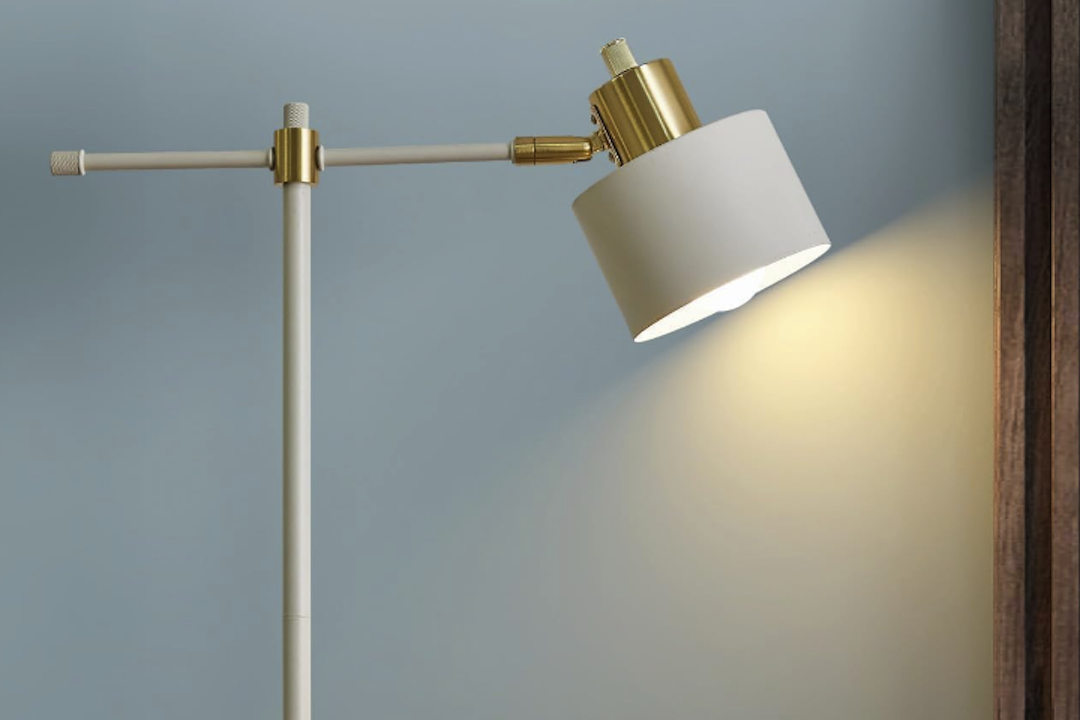In the realm of modern lighting solutions, the three-color lighting table lamp has emerged as a versatile and functional choice for various settings, particularly in study environments. These lamps are designed to provide users with the ability to switch between three distinct color temperatures: warm white, cool white, and daylight. Each of these settings serves a unique purpose, catering to different activities and preferences.
The warm white light, often associated with relaxation and comfort, is ideal for winding down or reading leisurely. In contrast, cool white light is more stimulating and is often preferred for tasks that require focus and concentration. Daylight, with its bright and vibrant quality, mimics natural sunlight, making it an excellent choice for activities that demand high visibility and energy.
The increasing popularity of three-color lighting table lamps can be attributed to their adaptability and the growing awareness of the impact of lighting on productivity and mood. As more individuals work or study from home, the need for effective lighting solutions has become paramount. These lamps not only enhance the aesthetic appeal of a workspace but also contribute significantly to creating an environment conducive to learning and creativity.
By understanding the nuances of three-color lighting, users can optimize their study sessions and improve their overall performance.
Benefits of Three-Color Lighting for Studying
Customizable Lighting for Optimal Productivity
One of the most significant advantages is the ability to tailor the lighting to suit specific tasks or times of day. For instance, during early morning hours when natural light is scarce, using daylight mode can invigorate the space, helping to wake up the mind and enhance alertness. This is particularly beneficial for students who may struggle with morning fatigue or those who need to maximize their productivity during limited daylight hours.
Creating a Calming Atmosphere
Moreover, the warm white setting can create a calming atmosphere that is conducive to relaxation and reflection. This is especially useful during breaks or when reviewing material at a slower pace.
Improved Focus and Academic Performance
The ability to switch between these modes allows students to maintain their focus without experiencing eye strain or fatigue, which can often occur with prolonged exposure to harsh lighting. Additionally, studies have shown that appropriate lighting can influence mood and cognitive function; thus, having control over the color temperature can lead to improved retention of information and overall academic performance.
Features of Three-Color Lighting Table Lamp
Three-color lighting table lamps Musui-life come equipped with a variety of features that enhance their functionality and user experience. One of the most notable features is the adjustable brightness levels that accompany each color temperature setting. Users can often choose from multiple brightness options, allowing them to customize the intensity of light based on their preferences or the specific requirements of their study tasks.
This flexibility ensures that whether one is engaged in detailed reading or writing notes, the lighting can be optimized for comfort and efficiency. Another important feature is the presence of touch controls or remote operation in many modern models. Touch-sensitive lamps allow users to easily switch between color temperatures and brightness levels with a simple tap or swipe.
This intuitive design enhances usability, especially during late-night study sessions when physical buttons may be difficult to locate. Some lamps even come with built-in timers or programmable settings that can automatically adjust the lighting based on the time of day or user-defined schedules, further promoting a healthy study routine.
How to Choose the Right Three-Color Lighting Table Lamp
Selecting the right three-color lighting table lamp involves considering several factors that align with individual needs and preferences. First and foremost, one should assess the size and layout of the study space. A larger desk may benefit from a more substantial lamp that provides ample illumination without taking up too much space, while smaller desks might require compact models that still deliver effective lighting without overwhelming the area.
Another critical aspect to consider is the lamp’s design and aesthetic appeal. Since a table lamp often serves as a focal point in a study area, choosing one that complements existing decor can enhance the overall ambiance. Additionally, examining the lamp’s build quality and materials is essential; durable materials not only ensure longevity but also contribute to stability, preventing accidental tipping during use.
Finally, it’s wise to read reviews and compare different models based on user experiences regarding brightness levels, ease of use, and overall satisfaction.
Setting Up and Using a Three-Color Lighting Table Lamp
Setting up a three-color lighting table lamp is typically straightforward, but there are best practices that can enhance its effectiveness in a study environment. First, it’s important to position the lamp at an appropriate height and angle to minimize glare on screens or books while maximizing illumination on work surfaces. Ideally, the light source should be placed behind or beside the user to create an even distribution of light without casting shadows.
When using the lamp, it’s beneficial to experiment with different color temperatures and brightness levels to find what works best for various tasks. For instance, during intense study sessions that require deep concentration, utilizing cool white light at a higher brightness can help maintain focus. Conversely, when taking breaks or engaging in less demanding activities like brainstorming or organizing notes, switching to warm white light can create a more relaxed atmosphere conducive to creative thinking.
Tips for Maximizing the Effectiveness of Three-Color Lighting for Studying
Creating a Productive Study Environment
Additionally, incorporating breaks into study sessions is crucial for maintaining productivity over extended periods. During these breaks, switching to warm white light can create a soothing environment that encourages mental rest without completely dimming the workspace. Furthermore, ensuring that other sources of ambient light are balanced with the table lamp can prevent harsh contrasts that may lead to eye strain.
Managing Natural Light
Utilizing curtains or shades to control natural light can also enhance the overall effectiveness of artificial lighting. This allows for a more tailored approach to lighting, where the combination of natural and artificial light can be optimized for the specific needs of the study session.
Implementing a Lighting Routine
By implementing a routine that incorporates different lighting modes, individuals can create a study environment that supports their natural rhythms and promotes productivity. This can involve setting specific times for switching between daylight and warm white light modes, as well as adjusting the intensity of the light to suit the task at hand.
Minimizing Eye Strain
Ultimately, the key to effective three-color lighting is finding a balance that works for the individual. By controlling ambient light, using breaks to rest the eyes, and adjusting the lighting to suit the task, individuals can minimize eye strain and create a study environment that is both productive and comfortable.
Comparing Three-Color Lighting Table Lamps on the Market
The market for three-color lighting table lamps is diverse, offering a wide range of options tailored to different needs and budgets. When comparing models, it’s essential to look at key specifications such as wattage, lumens output, and energy efficiency ratings. Higher lumens indicate brighter light output, which is particularly important for tasks requiring precision and detail.
Brands like TaoTronics and BenQ have gained recognition for their innovative designs and user-friendly features. For instance, TaoTronics offers models with advanced touch controls and customizable settings that cater specifically to students’ needs. On the other hand, BenQ’s lamps are often praised for their ergonomic designs that reduce glare and eye strain during prolonged use.
Reading customer reviews can provide valuable insights into real-world performance and durability, helping potential buyers make informed decisions.
The Impact of Three-Color Lighting on Studying
The impact of three-color lighting on studying cannot be overstated; it plays a crucial role in shaping an effective learning environment. By allowing users to customize their lighting according to specific tasks and times of day, these lamps contribute significantly to enhancing focus, reducing fatigue, and improving overall productivity. As students increasingly seek ways to optimize their study habits in an ever-evolving educational landscape, investing in a quality three-color lighting table lamp emerges as a practical solution that addresses both functional needs and aesthetic preferences.

